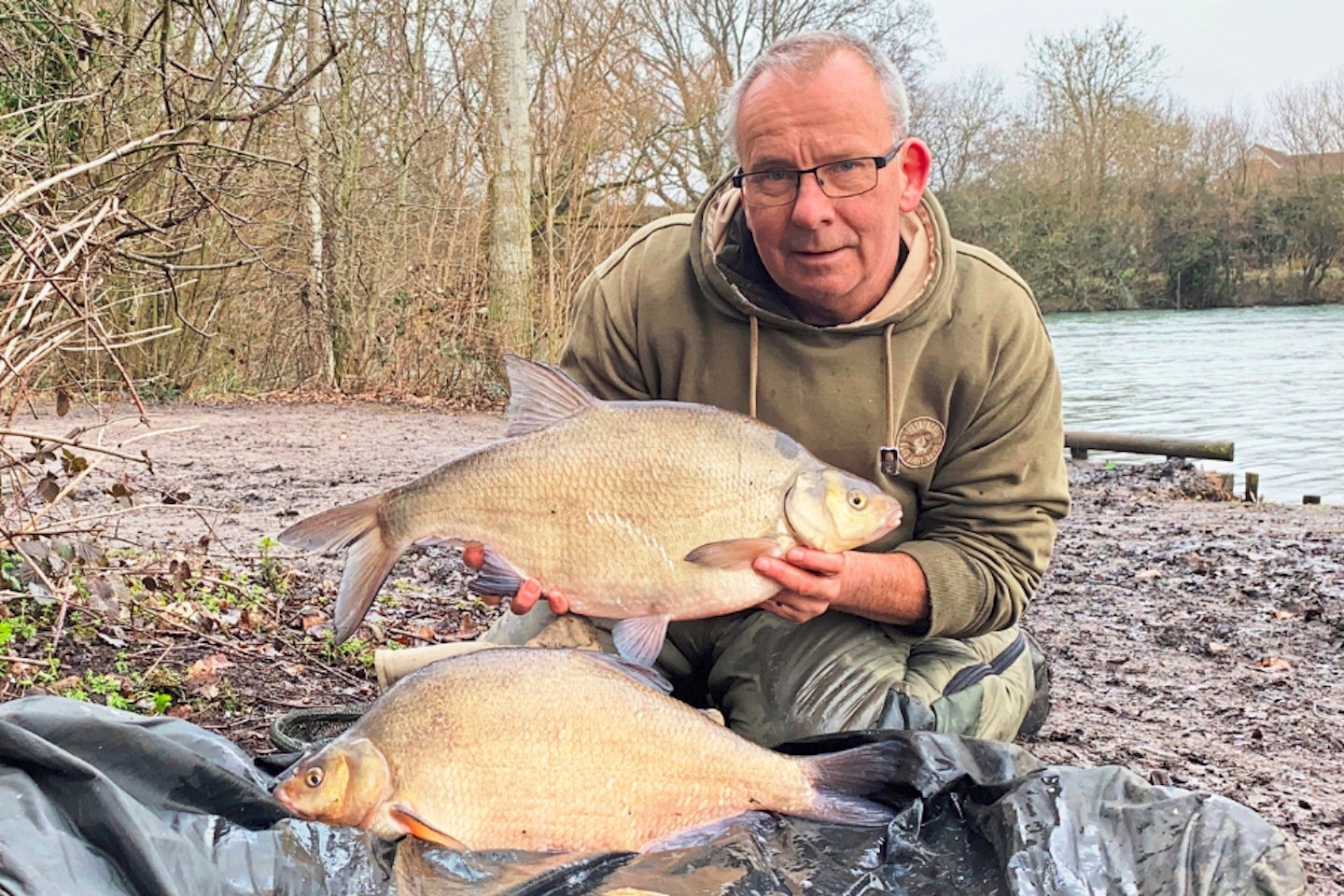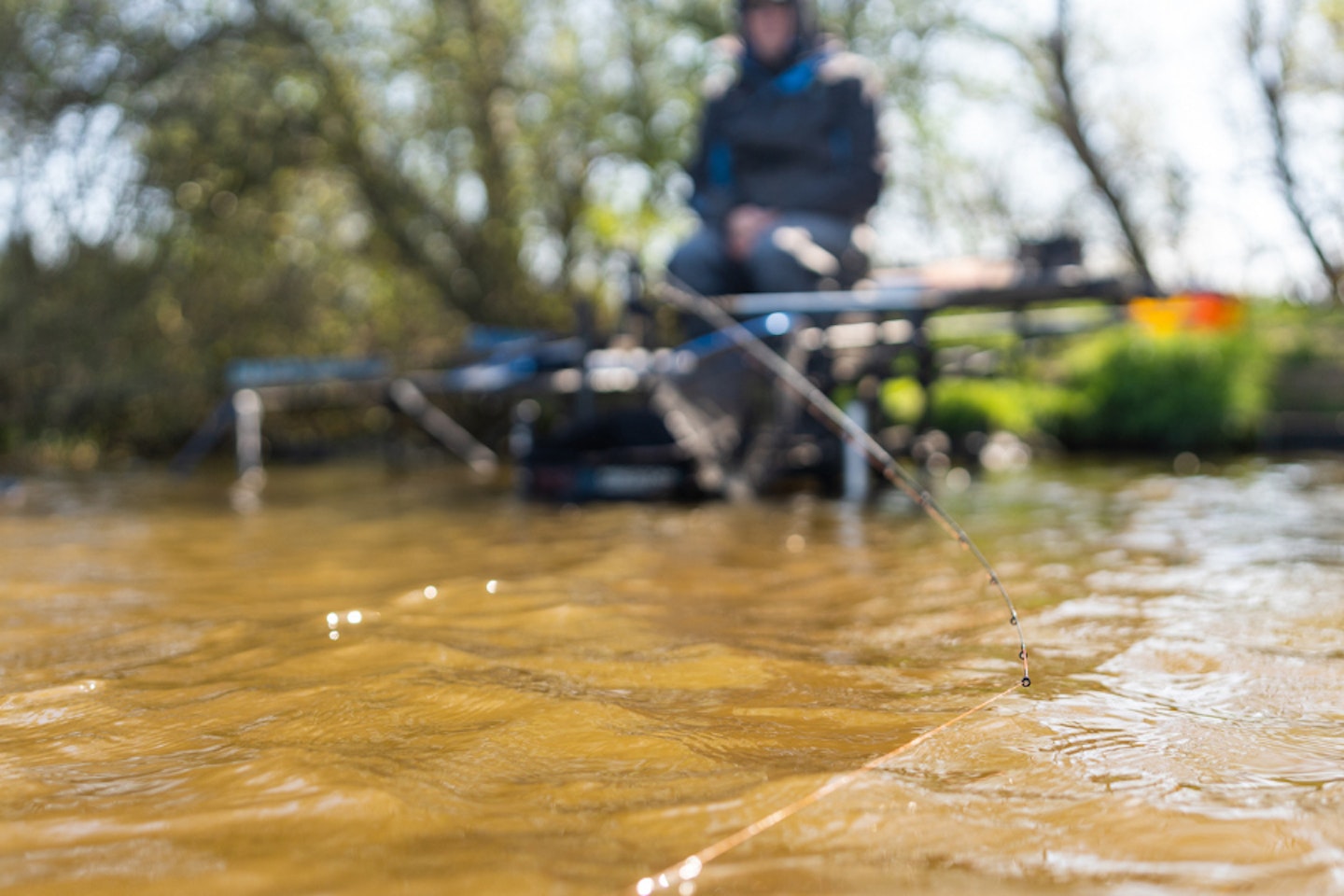Bream often get a bad reputation as nuisance fish, especially among carp anglers, but speak to seasoned match or pleasure anglers, and you'll hear a different story. Big bream, often called "bin lids" due to their size and shape, are prized fish that can put up a surprisingly good fight.
If you've never caught one before, don’t let the opinions of other anglers put you off as bream fishing can be rewarding, and with the right approach, you’ll be landing a net of slabs in no time.
Bream are bottom feeders, which means your best bet for catching them is with a feeder setup, while other tactics can work, nothing consistently produces results like fishing the feeder. It allows you to get bait right where the bream are feeding, keeping them in your swim and encouraging confident bites.
CATCH YOUR FIRST BREAM ON ONE OF THESE VENUES IN OUR WHERE TO FISH GUIDE.

Feeder fishing for bream
Setting up your feeder rig is straightforward. Set up a feeder rod, paired with a 3000-4000 sized reel loaded with 5-6lb monofilament, which will give you the perfect blend of strength and finesse. A simple running feeder rig is the best approach utilising a quick-change hooklength swivel to allow for easy hooklength swaps. A hooklength between 12” and 18” inches work well, and a size 16 wide gape hook to 4lb mono will get the job done.
PICK THE BEST FEEDER ROD FOR THE JOB WITH THIS EXPERT GUIDE.

Get your groundbait right
Groundbait plays a huge role in drawing bream into your swim and holding them there. Most tackle shops stock dedicated bream groundbaits, which are a great place to start, but as you gain experience, you’ll develop your own mixes that work best for the venues you fish.
The key to a good mix is getting the consistency right and by adding water a little at a time, it helps avoid a sloppy mix. A good rule of thumb is to prepare your groundbait as soon as you arrive at your peg, giving it enough time to absorb all the water. You can then revisit it and add more water until it binds just enough to hold together in the feeder but easily breaks apart in the water.
CHECK OUT OUR PICK OF THE BEST GROUNDBAITS FOR FEEDER FISHING.

Have a choice of hookbaits
Hookbait choice can make all the difference. Bream respond well to a range of baits, and having a few options on your side tray will increase your chances of success. Maggots, sweetcorn, and soft hook pellets are all proven bream-catchers. If you're struggling to get bites, switching between these can often turn a quiet session into a productive one.
SEE OUR PICK OF THE BEST FEEDER RODS FOR BREAM FISHING IN THIS GUIDE.

Load up the feeder and cast
Loading the feeder properly ensures your bait is presented in the best way possible. A great trick is to sandwich free offering inside the feeder for extra attraction. To do this plug one end with groundbait, before adding a few free offerings in the middle of the feeder like pellets, maggots or casters, then seal it with another layer of groundbait before casting out.
Once the feeder settles on the bottom, tighten up to it carefully to avoid moving the feeder out of position. The best way to do this is by keeping your rod tip low to sink the line. When everything is set, place the rod on the rest with a slight bend in the quiver tip. When a bream picks up the bait, you’ll see the tip pull around as the fish moves off. That’s your cue to lift the rod and strike, you're into your first bream.
REELS DON'T HAVE TO COST THE EARTH SEE OUR PICK OF THE BEST REELS UNDER £50.

Alternative methods
On some venues where groundbait isn’t allowed, a maggot feeder can be a great alternative. These feeders have caps on either end, allowing you to fill them with live maggots before casting. As the maggots wriggle free, they disperse on the bottom, making it an excellent method, particularly lakes and rivers.
BE COMFORTABLE ON YOUR NEXT SESSION WITH THE BEST FEEDER FISHING CHAIRS.

